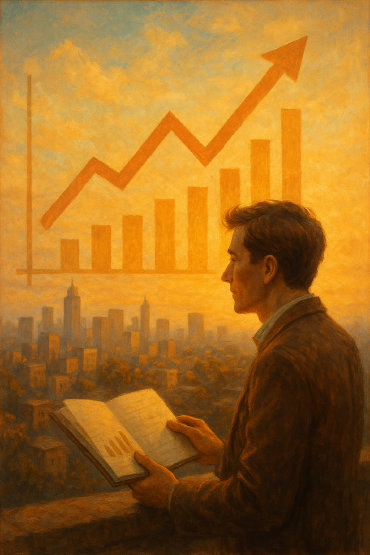Economic Indicators - Beyond Numbers, Speaking of Life
The True Meaning of Economic Indicators
Economic indicators are not just simple figures. They are a story intertwined with our lives, a vivid face that encapsulates human dreams and hopes, anxieties and frustrations, beyond just a collection of calculated data. We encounter indicators like economic growth rates, unemployment rates, exchange rates, and interest rates every day, but we need to reflect on what trajectories of life these numbers depict.
Economic Indicators and Human Emotions
On the surface, economic indicators may appear to be abstract and technical concepts, but behind them lie human emotions, rights, expectations, and frustrations. For example, when exchange rates stabilize, the prices of imported goods decrease, providing a sense of relief for some households as their cost of living burden lightens. On the other hand, export-oriented companies and their employees experience deep anxiety due to concerns over declining profitability. The same figure leads to different emotions and weights of life.
Social Significance of Economic Indicators
These economic indicators are not merely tools for diagnosing the present, but they provide us with an opportunity to expand our horizon of thought. For instance, when confronting a statistic like the unemployment rate, we should not stop at just the 'percentage' but also consider the lost self-esteem of each individual behind that number, the conflicts within families, and the uncertainties about the future. At this moment, economic indicators become not just criteria for policy judgment, but starting points that stimulate social imagination.
Impact of Interest Rate Policy
Monetary policy is no different. When interest rates rise, the burden on those managing loan repayments becomes heavier, and the dream of home ownership may become more distant. This includes a human amplitude that cannot simply be explained by the sentence 'interest rates have risen.' This is particularly true for vulnerable groups such as low-income individuals and small business owners. Fluctuations in economic indicators exert a practical force that pressures their livelihoods and shakes the direction of their lives.
Social Structure and Economic Indicators
Furthermore, we can reflect on social structures through economic indicators. For example, when looking at the 'household debt increase rate' indicator, we should not interpret it merely as a financial soundness issue, but rather contemplate the structural reasons why people find themselves in debt, including how heavily the costs of basic living such as housing, education, and healthcare weigh on them. By viewing indicators through the lens of human life, we can move beyond a mere enumeration of phenomena to structural questions.
Complexity of Growth Indicators
The figures of economic growth do not always benefit everyone. An increase in GDP does not necessarily mean that the real income of low-wage workers is rising, and poverty and inequality remain firmly entrenched. Behind the numerical growth lies the hard labor and silent sacrifices of some individuals. True indicators of growth must be able to encompass the stories of such lives.
The global economy and individual lives
The flow of the global economy, especially changes in the U.S. economy, directly and indirectly affects our economy. A decrease in interest rates or economic recovery can lead to exchange rate stability and investment activation, but we must closely examine how domestic jobs are impacted and who feels these changes. Even when interpreting global indicators, we must never forget the human face.
The Story Behind the Numbers
Ultimately, what matters is not the 'numbers' themselves, but the ability to read the threads of life hidden behind those numbers. The economy is fundamentally a human activity, and within it are condensed emotions of hope and fear, anger and solidarity, pain and recovery. Therefore, experts, the media, and policymakers must go beyond analysis and prediction, and also incorporate people's voices and stories.
Designing a Better Society with Economic Indicators
Going beyond merely viewing economic indicators as tools for policy decision-making, we can imagine and design a better society through them. For example, a society confronted with the high rate of 'youth unemployment' must consider not only improving employment figures but also innovating the educational system, transforming the entrepreneurial ecosystem, and exploring new ways of intergenerational solidarity. This is an expansion of thought that begins with a single number and represents the starting point of true change.
Human Economy
When we look at economic indicators from a human-centered perspective, we can finally understand the 'human economy.' Going beyond numbers to read their meaning and emotions is a process of bringing the economy back to everyday issues and is the first step towards leading society in a warmer and more empathetic direction.
Economic Indicators and Human Life
Economic indicators are ultimately an infinite story intertwined with the way humans live, their dreams, and the realizations and frustrations that come with them. When we come to understand the hopes and anxieties contained within, we can move towards a society where the economy and humanity coexist harmoniously.

Post a Comment